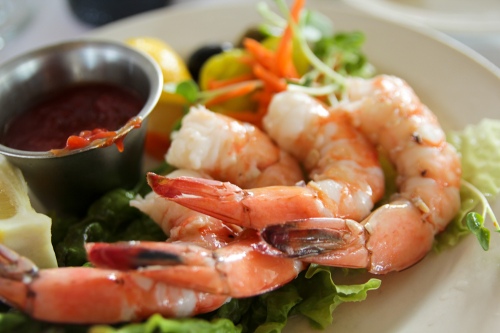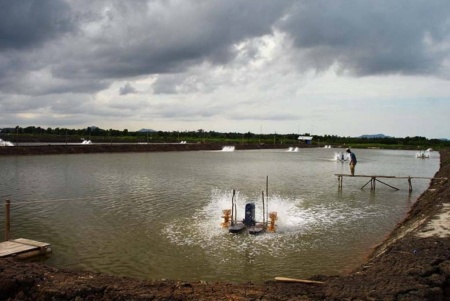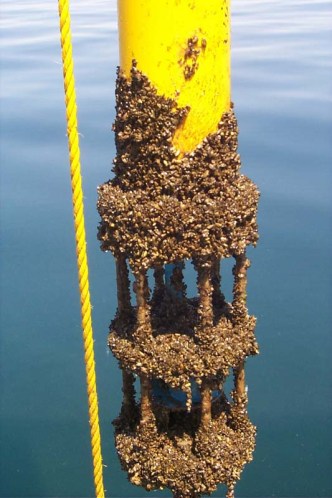Picture yourself eating a juicy fish filet or a delicious shrimp cocktail. You might be surprised to discover the diverse array of technologies that are used to raise the fish or shrimp you ordered.

In the past, that fish or shrimp landed on your plate after spending it’s life in the ocean or rivers. However, farmers are increasingly responsible for raising the seafood we eat—in an industry known as aquaculture. According to the Food and Agriculture Organization (FAO), production of fish products coming from aquaculture facilities has already surpassed traditional capture fisheries [1]. Although the aquaculture industry is considered fairly new when compared to other livestock production activities such as the poultry or cattle industry, it has proven to constantly reshape itself when facing real threats like virulent disease outbreaks or natural disasters such as typhoons. Workers in the aquaculture industry have rapidly adopted new state-of-the-art technologies to overcome daunting situations.

Nanotechnology is one of those areas that many aquaculture experts are turning to [2]. There are three primary areas I would like to highlight. Feeding, disease control, and biofouling control processes are being reengineered to get the maximum benefit from nanotechnology.
Nanotechnology in Fish Food
Traditionally, feeding fish has relied on providing fish with food in the form of a food pellet. This pellet is chiefly formulated based on the daily nutritional fish requirements for components such as fats, proteins, carbohydrates, minerals and vitamins. One current idea is that nanoparticles will enhance aquafeeds by increasing the proportion of fish food nutrients that pass across the gut tissue and into the fish, rather than passing directly through the fish digestive system unused [2]. Dietary minerals at the nanoscale size may pass into cells more readily than their larger counterparts. This accelerates their assimilation process into the fish. As an example, sturgeon and carp experts have found that offering iron nanoparticles in the diet boosts the growth of sturgeon and carp by 30 and 24 percent, respectively [3]. Adding other mineral nutrients to the regular fish diet at the nanoscale might also have a tremendous impact not only on growth but also on the overall health of the fish.
Additionally, if it is used responsibly, this technology could reduce the environmental impact of the fish feeding process. Increasing the amount of fish food that is used by the fish would decrease the amount of unused food that is discharged from aquaculture facilities into the environment.

Nanotechnology in Disease Control
Another critical aspect of aquaculture is the occurrence of diseases that emerge periodically. New or unchecked diseases may cause enormous losses for any aquaculture facility. Fortunately for some species used in aquaculture, vaccination can provide protection against viral agents present in the water. One question with vaccination is how to best deliver the vaccine to the fish. For example, oil/water mixtures called emulsions have been used as carriers for vaccines, but this method caused many negative side effects on the treated animals.
To assist aquaculture, the new approach to tackle the unwanted effects from oil emulsion is nanoencapsulation. In this process, a vaccine or other biomolecule is wrapped inside other substances that serve as a protective shell at the nanoscale. A great advantage to this is that nanoencapsulated complexes are very sturdy. They are capable of enduring high temperatures and changes in water acidity. Currently, a biologically derived compound called chitosan that is able to wrap itself around vaccines is a common carrier used in nanoencapsulation for treatment delivery. Recently researchers have met with moderate success at developing nanoencapsulated vaccines against the bacterium Listonella anguillarum in Asian Carp [4] and white spot syndrome virus in shrimp [5]. This technique is able to provide the vaccine with an extra layer of protection against being inactivated by the sea creature’s metabolic machinery.
Nanotechnology as a Protective Coating
The last critical point I’ll cover in which aquaculture managers spend a lot of effort and money is to control the attachment of living organisms onto underwater surfaces. This is known as biofouling, and control of this process has caused much controversy because of the use of toxic substances. To get rid of organisms attaching to solid structures such as pipelines, ship hulls, and filtering system surfaces, a very common practice was to employ the antifouling pesticide tributyltin (TBT). This chemical was regularly applied in paint mixtures to cover diverse surfaces. Its use was so ubiquitous that it began to harm non-target aquatic species. This unwanted outcome led to the ban of this chemical from its use as an antifouling agent by the International Maritime Organization.

Nowadays nanoparticles made from copper oxide, zinc oxide, and silica are good candidates to replace TBT in paint mixtures [3]. The main notion is that nanoparticles provide more surface area as compared to more bulky materials. This increased surface area provides more of a barrier for organisms attempting to attach to or grow on nano-coated surfaces. When surfaces are kept smooth and free of organisms, less energy is required to pump water or move ships through the ocean. This can contribute to decreased fossil fuel consumption and decreased carbon dioxide emissions, which can increase global sustainability.
Overall, the adoption of nanotechnology into different aquaculture procedures seems to be inevitable and will surely bring more advances to this activity in the future. Since nanotechnology may help aquaculture production by improving feeding formulation, disease control, biofouling control, and possibly many other processes, perhaps your next fish filet or shrimp cocktail will have been raised on the benefits of nanotechnology.
REFERENCES
1. FAO Yearbook. Fishery and Aquaculture Statistics 2010.
2. Handy RD. FSBI Briefing Paper: Nanotechnology in Fisheries and Aquaculture. Fisheries Society of the British Isles 2012.
3. Rather MA, Sharma R, Aklakur M, Akhtar MS, Ciji A, Ahmad S, Khan M. Nanotechnology: An emerging avenue for aquaculture and fisheries. In: World Aquaculture; 2011: 9-11.
4. Rajeshkumar S, Ahmed VPI, Parameswaran V, Sudhakaran R, Babu VS, Hameed ASS. Potential use of chitosan nanoparticles for oral delivery of DNA vaccine in Asian sea bass (Lates calcarifer) to protect from vibrio (Listonella) anguillarum. Fish and Shellfish Immunology 2008; 25:47-56.
5. Rajeshkumar S, Venkatesan C, Sarathi M, Sarathbabu V, J. Thomas, Basha KA, Hameed ASS. Oral delivery of DNA construct using chitosan nanoparticles to protect the shrimp from white spot syndrome virus (WSSV). Fish and Shellfish Immunology 2009; 26:429-237.

[…] Para leer el blog original en ingles, presione aquí. […]